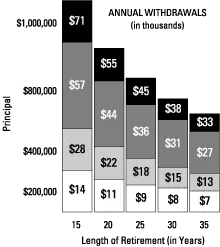Navigating the complexities of estate planning can be overwhelming, especially when it comes to tax implications. In New York, estates valued above a certain threshold are subject to estate tax, which can significantly impact your loved ones’ inheritance. This article identifies strategies to help you maximize your estate while keeping it below the tax limit.
From leveraging lifetime gifting to utilizing trusts, there are various options available to minimize your tax burden and ensure the smooth transfer of your assets to your heirs.
Understanding estate taxes in New York
Estate taxes in New York can be complex and challenging to navigate, especially for those who are unfamiliar with the intricacies of estate planning. As a resident of the Empire State, it’s crucial to have a solid understanding of how estate taxes work and how they can impact your financial goals.
The estate tax is a tax levied on the transfer of your assets upon your death. In New York, the estate tax is administered at the state level, in addition to the federal estate tax. This means that your estate may be subject to both state and federal estate taxes, depending on the value of your assets.
The current estate tax limit in New York
As of 2024, the estate tax exemption in New York is $6.94 million. This means that if the total value of your estate is less than $6.94 million, your estate will not be subject to the New York estate tax. However, if the value of your estate exceeds this threshold, your estate will be subject to a tax rate that can range from 3.06% to 16%.
It’s important to note that the estate tax exemption in New York is different from the federal estate tax exemption. The federal estate tax exemption is currently set at $13.61 million for individuals and $27.22 million for married couples. This means that if your estate is valued below the federal exemption, it will not be subject to the federal estate tax.
Understanding the difference between the state and federal estate tax exemptions is crucial in estate planning. If your estate exceeds the New York exemption but falls below the federal exemption, you may still be subject to the state estate tax, even if you are not subject to the federal estate tax.
Gifting strategies to reduce your estate
Lifetime gifting is a powerful tool in estate planning, as it allows you to transfer wealth to your loved ones while you are still alive. By taking advantage of the annual gift tax exclusion, you can reduce the overall value of your estate and potentially avoid or minimize the estate tax. Under the current tax laws, you can gift up to $18,000 per person per year (or $36,000 for married couples) without incurring any gift tax.
In addition to the annual gift tax exclusion, you can also utilize the lifetime gift tax exemption, which is currently set at $13.61 million per individual. This means that you can gift up to $13.61 million during your lifetime without incurring any gift tax. However, it’s important to note that any gifts you make will reduce the amount of your estate tax exemption at the time of your death.
Another gifting strategy to consider is the use of a 529 college savings plan. By contributing to a 529 plan, you can effectively remove those assets from your estate, while also providing a tax-advantaged way to save for your loved ones’ education. Additionally, 529 plan contributions qualify for the annual gift tax exclusion, making them a particularly attractive option for estate planning.
Creating a trust to protect your assets
Trusts can be a powerful tool in estate planning, as they allow you to transfer assets to your beneficiaries in a controlled and tax-efficient manner. There are several types of trusts that you can consider, each with its own unique advantages and considerations.
One popular option is the revocable living trust. With a revocable living trust, you can transfer ownership of your assets to the trust while you are still alive, but maintain control and access to those assets. Upon your death, the assets in the trust are distributed to your designated beneficiaries, bypassing the probate process.
Another type of trust to consider is the irrevocable trust. Unlike a revocable living trust, an irrevocable trust cannot be modified or terminated once it has been established. However, this structure can provide significant tax benefits, as the assets in the trust are no longer considered part of your estate. Irrevocable trusts can be particularly useful for protecting assets from creditors or for minimizing estate taxes.
Utilizing life insurance to cover estate taxes
Life insurance can be a valuable tool in estate planning, particularly when it comes to addressing the potential estate tax liability. By purchasing a life insurance policy, you can ensure that your loved ones have the funds necessary to pay any estate taxes that may be owed upon your death.
There are several types of life insurance policies that can be used for this purpose, including term life insurance and permanent life insurance (such as whole life or universal life). The choice of policy will depend on your specific needs and financial goals, as well as the size of your estate and the anticipated estate tax liability.
In addition to providing a source of funds to pay estate taxes, life insurance can also be used to create liquidity within your estate. This can be particularly important if your estate is primarily composed of illiquid assets, such as real estate or a closely-held business. By using life insurance to generate cash, you can ensure that your heirs have the resources they need to pay any taxes or other expenses associated with your estate.
Considerations for business owners in estate planning
If you are a business owner, your estate planning strategy will require additional considerations and nuances. Your business assets, including real estate, equipment, and intellectual property, can significantly impact the value of your estate and the potential estate tax liability.
One key consideration for business owners is the use of succession planning. By developing a clear plan for the transfer of your business to your heirs or other designated successors, you can ensure a smooth transition and minimize the potential for disputes or tax complications. This may involve the use of buy-sell agreements, family limited partnerships, or other specialized business structures.
Working with a financial planner and estate planning attorney
Navigating the complexities of estate planning and minimizing your estate tax liability in New York can be a daunting task, especially if you are unfamiliar with the intricacies of the New York estate tax system. That’s why it’s crucial to work with a qualified financial advisor and estate planning attorney who can guide you through the process and help you develop a comprehensive strategy.
Remember, estate planning is an ongoing process, and it’s essential to review and update your plan as your circumstances and the tax landscape evolve. By staying informed, seeking professional guidance, and taking a proactive approach, you can ensure that your legacy is preserved and your loved ones are protected.










